Netflix’s Head of Animated Series on the Streamer’s Strategy to “Win the Living Room” in 2023 and Beyond
- Oops!Something went wrong.Please try again later.

When Netflix released its first-ever Engagement Report — a revealing look into what (and how much) people are watching within the streamer’s film and TV catalog — live-action adult and young adult series like Ginny and Georgia, The Night Agent and Fubar were among those that topped nearly a billion hours watched.
But between January and June 2023, seasons of animated originals Sonic Prime, Gabby’s Dollhouse, Barbie Life in the Dreamhouse, My Dad the Bounty Hunter and The Creature Cases also ranked among the 500 most-viewed series (out of 18,000), as did acquisitions like Paw Patrol, CoComelon, PJ Masks and Peppa Pig.
More from The Hollywood Reporter
J.A. Bayona on His 10-Year Journey to Bring 'Society of the Snow' to the Screen
Netflix's 'The Brothers Sun' Puts Spotlight on L.A.'s San Gabriel Valley (Exclusive Video)
Host Jo Koy's Been Charged With a "Celebratory" Golden Globes - That Doesn't Mean He Can't Roast
And while much of the streamer’s most popular animated content came from its kids and family programming, the report reveals new and previously released seasons of adult animation and anime entries like Castlevania, Love, Death & Robots, Bee and Puppycat, Disenchantment, Big Mouth, and Skull Island were among the top 22 percent of watched titles.
In one of the biggest testaments to the growing influence of animation on the platform and among Western audiences, one of Netflix’s biggest and most ambitious series, Arcane, even managed to rack up 15.2 million hours despite having released in November 2021. Based on Riot Games’ Legend of Legends, the series’ first and only season ranked among the streamer’s top 1,500 most-watched shows in the first six months of this year.
Netflix isn’t done, either. The back half of 2023 has seen the streamer find success in recent critical darlings Blue Eye Samurai and Scott Pilgrim Takes Off, as well as Emmy winners Kung Fu Panda: The Dragon Knight, StoryBots: Answer Time, Sonic Prime and The Cuphead Show!, which have streamed alongside the likes of franchise expansions CoComelon Lane and Castlevania: Nocturne. It’s also announced a slew of anticipated preschool and adult debuts and returns with Tomb Raider: The Legend of Lara Croft, Devil May Cry, Arcane, Spirit Rangers, Mighty Monster Wheelies and Hot Wheels Let’s Race, to name just a few.
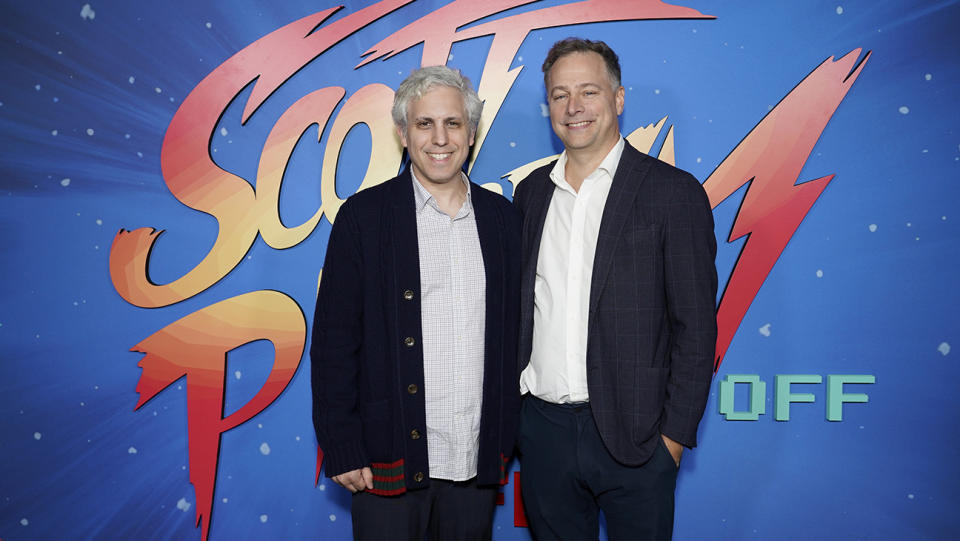
After a year of growth — and even more titles on the way — The Hollywood Reporter spoke to John Derderian, Netflix’s head of animated series, this fall about the streamer’s animated TV strategy and working with “master storytellers, even for kids” who can help Netflix “win the living room” across their slate.
There is a growing investment in adult or all-ages animation, but preschool and kids is still a pretty successful, if not the most successful, space in animated TV. How are you approaching it within the larger vision for Netflix’s animated series slate?
The entire medium itself is stretching into new places and new audiences, which is exciting. I started a lot of our anime here almost a decade ago, and now we’ve developed into these other areas with shows like Arcane and other larger adult dramas, which really didn’t exist outside of anime and some European art-house sensibilities. So something we are always thinking about, even for our kids programming, is how do we bring in more adults and win the living room? Where do we have a four-quad opportunity in those shows?
The preschool audience is as important as ever, I would say, and we see great innovation, more energy in it. But it’s a very different audience, not like an adult coming to a show as a fully formed individual. So because part of the main ethos of Netflix is to be tied to our audience, we’re meeting the audience where they are. I like that phrase for preschool especially because they’re in a place of development — cognitive, emotional, social. We take the responsibility of that to heart and want to make shows that are exciting, drive a lot of engagement of a child, and can entertain them, but also are founded in meeting them where they are in that journey of growth and entering the world.
We work very closely with experts and educators, because a parent or a caretaker is putting a lot of trust in us when they click play on Netflix, and we do want to help them find something to share with a kid. We recently went through our slate of Dr. Seuss titles with the entire animation team — Horton [Hears a Who!], The Sneetches, [One Fish, Two Fish,] Red Fish, Blue Fish — and those shows are very cute, but are almost giving us a sense of nostalgia, too. A parent or a caretaker can connect with a child through their mutual love of a property. Even shows that are more recent can connect siblings, connect cousins.
And if you look at the most successful shows, a lot of the things that have worked in preschool have been things that are enduring, so we’re trying to build a variety catalog. We want to have a lot of the best shows that are out there, the shows that really have a lot of heart and have a lot of ability to connect and break through with a kid or child. We also want them to just be high-quality. That includes licensed titles, and we’re glad a lot of folks want to be on Netflix. It’s a place they feel there’s a large audience engaged with their show. But also it’s a walled garden. It’s offering a sense of a controlled environment at that level, and everything on there is curated by our team of programmers.
The linear approach for kids animation went from cartoon blocks on broadcast to dedicated cable networks. Netflix isn’t separating out its kids shows from adult series in that way. It’s also programming international and domestic series on the same platform. What and how are you prioritizing in terms of age demographic, location and even original versus acquired IP?
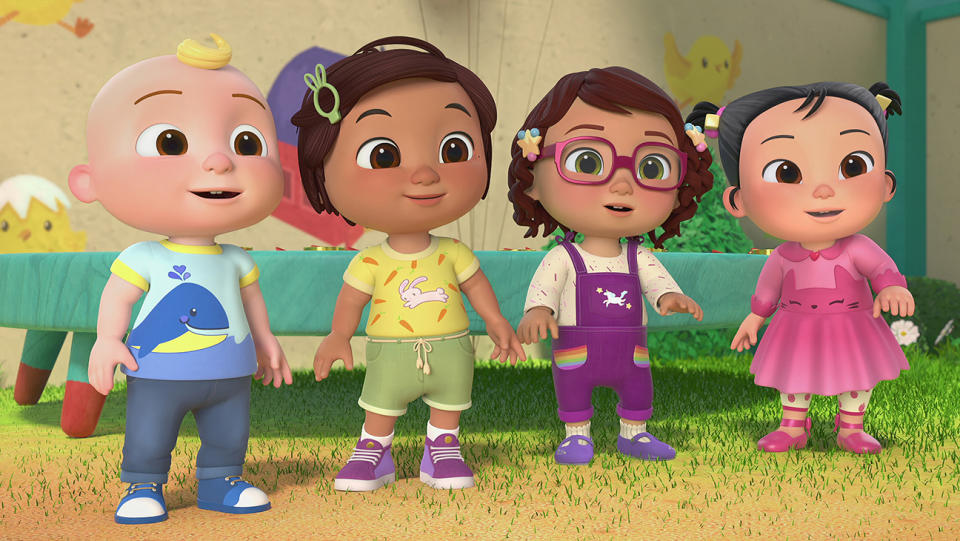
For us, it’s more a question of what are the amount of resources we put to it? In preschool, we have over the last many years launched a lot of shows and done IP deals to get Storybots or Seuss. Maybe in the future, there’s [Roald] Dahl preschool. There’s a lot of areas we think we can find successful shows in, and that can be a great compliment to the broader offerings we have.
But from the top of this company down, there’s a great energy to make sure we’re entertaining and entertaining broadly. We’re tasked to program globally for preschool. This is why we have a lot of shows from Spain, Korea and India. And because our audience is very global, they have different tastes, values and mood states. We have to meet them where they are, and we have this whole level of curation to address that and make sure that there’s a show for everyone that’s behind this walled garden.
There’s another layer of curation that’s done by the parent and the child. A family in India versus a family somewhere in the United States, their journey through Netflix will be very different. So ideally, if we’re providing enough quality and variety of shows, there will be a journey for both of those families and both of those children. That’s really important to us. I think that’s where that trust-building really comes in.
When I was a child many, many years ago, the TV was on and whatever was on, I was watching that. That wasn’t always something I was interested in or something age-appropriate. Entertainment was more of a sledgehammer in the old days. Now the journey is almost defined by the caretaker or the family with the child, and that’s somewhat revolutionary. So we want to make sure that all these tools that are now at the disposal of parents and caretakers are activated in a way that’s compelling and really exciting for them. That’s what we prioritize.
While you don’t have dedicated networks to delinate your children’s and adult animation, you do have the profile feature. Are you weighing where your views are coming from — an adult profile versus a kids profile — differently for your animated shows?
We look at it all. There is actually a lot of preschool that is watched in the adults section. I have created a profile for my kids, and I’m often navigating it for them. Now they’re picking that up themselves. So we look at that as probably just someone who usually isn’t using a profile or just wants to do it themselves, too, and that’s the easiest thing for them. And it can be great to have a kids profile because it can be a bit more helpful in finding new shows. When you have everyone on one thing, it could get a little bit messy.
Whether someone’s using an adult or kids profile, what are the kinds of stories you’ve found resonate most with those viewers for younger audiences?
If you think of Gabby’s [Dollhouse], which really is the first streaming mega-hit in terms of how much it’s penetrated the culture, the engagement for us — there’s so much going on, so much energy around that property. Same thing for CoComelon, which we didn’t originate, although we have originals on Netflix.
Gabby’s to me is leveraging things kids already love, like dollhouse play, transformation, and the unboxing video phenomenon, but no one had thought to bring all those things together with an incredibly charming girl at the center of this candy-filled cat world. Now when you look at it, it’s always hindsight’s 20/20, but I do think that a kid looks at that show and feels like there’s a terrific journey for themselves and a lot of aspirational elements of it that connect and break through.
The idea of a team-driven rescue show, like most places, is pretty successful for us. As are shows with play patterns. Kids want to play and to be able to mimic or dive into the world they’re living in on the screen. You also have another area which is the young family sitcom, effectively. That’s a different mood or tone where you’re engaging with how to play with your family or learning about the elements of a neighborhood or a family. That’s more comedy-driven, but something very joyful and connecting for a young child.
Those are the areas for preschool we’ve thought about and talked about a lot recently, but also all the way up [in age].
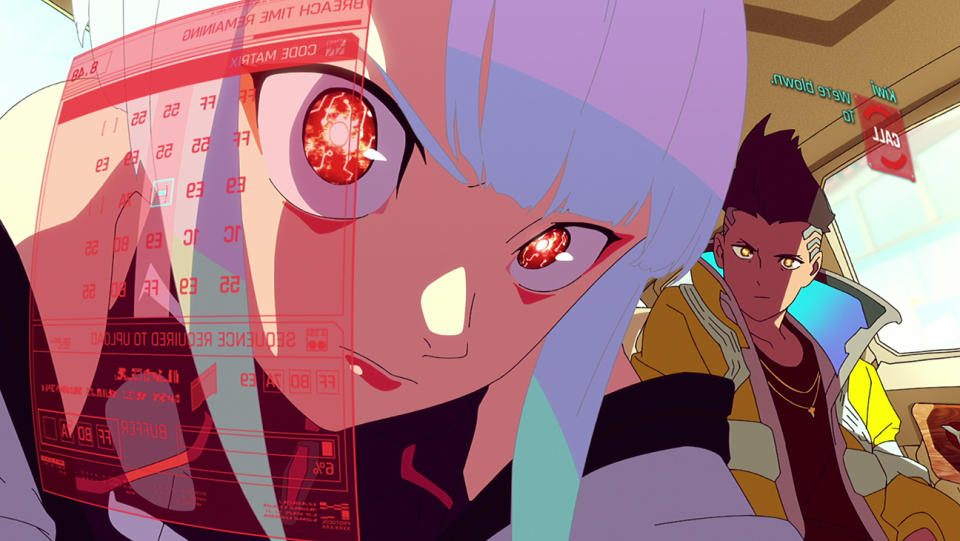
Let’s talk about older animation viewers, which for Netflix does include the young adult audience — a group that just 10 years ago might have gotten pushback around being programmed to. Young adult by nature programs more broadly like anime. How do these fit into your vision?
When we started getting more serious in anime 10 years ago, doing more licensing and co-productions and then going into making originals, anime hadn’t really cracked through. Five years ago, it really started to and I would chalk that up to streaming and being in a world where things like anime or K-drama — which are so excellent in the boundaries of what they’re doing — could break through more broadly culturally on a global basis. That also brought along things like Nimona or Into the Spider-Verse, things that are visually so impressive.
I had a conversation about Nimona and Arcane and their increased graphic style, which has more grit to it — an aged-up look and energy. We see great opportunity there. We’re investing more in that. You can look at Arcane, Cyberpunk or Castlevania and say we have a lot of gaming fans coming in. But it’s really an energy among younger people that these stories feel very relevant to them. The stories of David and Lucy [in Cyberpunk], the sister story in Arcane — there’s a deeper attachment and because they look a little bit older and have a distinct style, they build their relevance that way.
You just mentioned a number of IP titles, and while Netflix announced the Hot Wheels, Universal Mosters and Oz shows for preschool, most of the animated IP teased this year is in the adult animation or anime space. How are you thinking about programming IP for younger versus older audiences?
Almost every anime is from a manga, usually something pretty big. Then we started doing game adaptations, which going back to the audience, we’re always laser focused on what do people look for and how do we match them with a great creator and vision. If you think about gaming and animation, that audience is often very heavily overlapped, so when we adapt a game that is relevant to that same audience, say [ages] 10 to 24, they could be very excited for that because this is another rendered world. A lot of games have tons of world building, which is often achieved in animation in ways that it can’t be in live action.
We spend a lot of time doing that because a lot of those worlds are riveting and there’s a huge fandom. That’s one of the reasons we look into adaptations. They are an opportunity to have an incredible cultural moment. I think for preschool, traditionally, the IP is not as important because it’s just not as relevant to that core audience. It’s similar to adult comedies and animation. Almost none of those are IP. They’re all basically someone with a comic vision that was compelling. And a lot of those shows have run 10, 15, 20 years similar to preschool shows.
There’s been several brands that have really swallowed up a lot of the attention and culture around preschool in that time, so we look at it more like what’s a show that’s easy to understand and get into but also once you pull back that blind, there’s a rich world inside with characters you love, with play patterns you can enjoy and mimic, or a friendship group or a family group you want to spend time with.
You’ve got a number of great creators in live-action, like Shonda Rhimes, and obviously the animated kids space has tons in terms of individuals and studios. But are you looking for a “Shonda Rhimes” within your animated content slate?
We’re looking for master storytellers, even for kids. Maybe even more so with kids. That’s what they want. They want to be on an amazing, exciting journey. For us in preschool, it’s marrying concepts that can win in terms of the play pattern or young family sitcom, something driven primarily by friendship with a vision from someone who’s a master storyteller inside of that show. But if people can’t attach themselves to characters in shows be it any any age range, I don’t think you can actually make a show that stands the test of time.
They have to fall in love with these characters. The emotion needs to speak in you. There needs to be something about these characters and the journey that really touches someone or provokes them in a way that makes them yearn to spend time with those characters. I don’t think we can do that just with, “You play with this toy.” There’s something deeper on an emotional and character level that we have to tap into and to do that consistently, you need a craftsman on the level of a Shonda Rhimes, but obviously someone more targeted towards animation that does a similar magic trick.
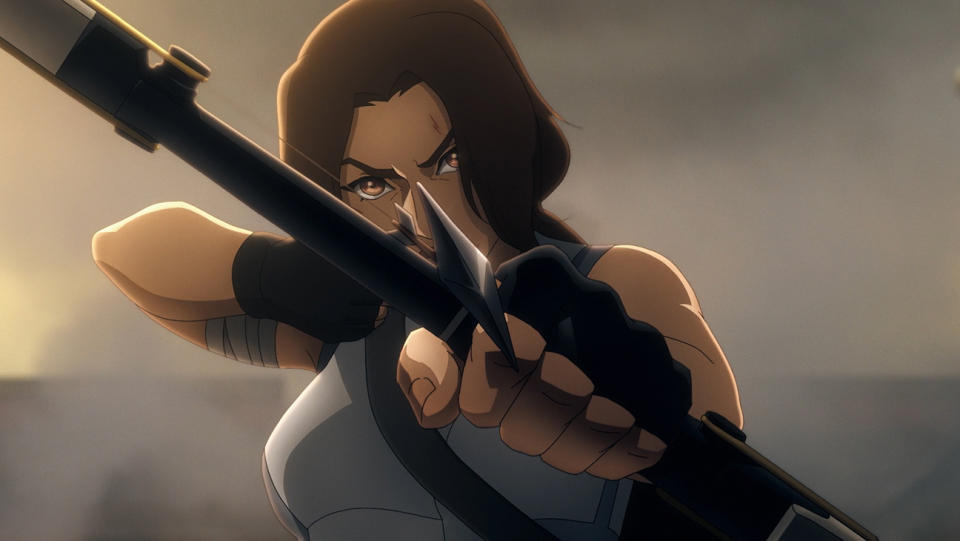
In October you made announcements about both the Tomb Raider and Devil May Cry anime series, franchises that have strong built-in fanbases. What can fans expect from those anticipated titles?
A blend of familiarity and surprise. Both adaptations refer to specific timelines from each franchise, but are welcoming enough for new audiences to meet Lara Croft and Dante. Without giving away too much, we can safely say that both adaptations expand on the underlying games in a way we believe fans will love.
Can you explain the decision to go with the anime style?
It all comes down to the creative. There’s a lot of overlap between anime fandom and gaming fandom, so producing shows in this anime-inspired style feels natural for our primary audience. We’ve also seen exquisite 3D expressions of both franchises with their latest game releases, and we’d rather our series complement the games with new, fresh visuals instead of compete with them.
These are examples of how much you’ve been partnering with video game studios — Ubisoft, Capcom, Sega, Riot. Why are you leaning more into the gaming content space, especially for adult animation?
We have been fortunate to see a tremendous audience response to our animated series adaptations of video games, including Castlevania, Arcane, Cyberpunk: Edgerunners, The Cuphead Show! and Sonic Prime. There are certain factors that have helped enable this success, including the growth in gaming, the high overlap between gamers and animation viewers, and the vibrant world-building that can be achieved in animation. However, what makes these shows so beloved by our members is the fact that they are created by incredible storytellers and artists who are authentic fans of these games and unrelenting in their determination to harness the DNA of the games and craft shows that are both thrilling and moving.
Slightly adjacent to this, Netflix has tapped into the interactive space, including choose your own adventure programs. PBS Kids, which has a long history of gaming tied to shows, is venturing into part of that space, too, with its upcoming Layla in the Loop series. Do you see a future in this for animated series?
If we’re lucky enough to have a show that someone falls in love with a character and wants to explore that journey in other extensions, we want to be here for that and make sure we’re satisfying that demand. It’s making sure they’re not left hanging, be that making a T-shirt that they can buy somewhere, a game or experience.
The last few years we’ve been building a game business. Over time, as that game initiative grows, we’ll be working with them to develop things across our entire slate. We already are on some adult projects that will it be interactive. Sometimes people want a broader dimensionality to that experience, so actually, gaming might be the answer going forward to build a tight connection narratively between the game and the show, but also have a game experience that is very rich, be it mobile or [something else]. Sometimes choose your adventure is more of a controlled experience as a game itself. I maybe see it being some sort of hybrid going forward, but we see a lot of energy around and interest in it.
And it goes back to the core ethos of Netflix: what is the audience looking for? What is the audience? Where’s that hunger? Sometimes it’s something they don’t know that they want and we have to think even deeper on that. But that’s what we’re always striving towards — adding a gamified experience to a show. Especially when a lot of the audience is already gamers themselves. When we first launched Sonic Prime, there was an amazing ROBLOX experience that Sega created. You’re playing in the game itself and then you’re watching a show that’s related to that. It’s something we’re putting a lot of time into, and I think you’ll see more of that game experience connected to our animated series.
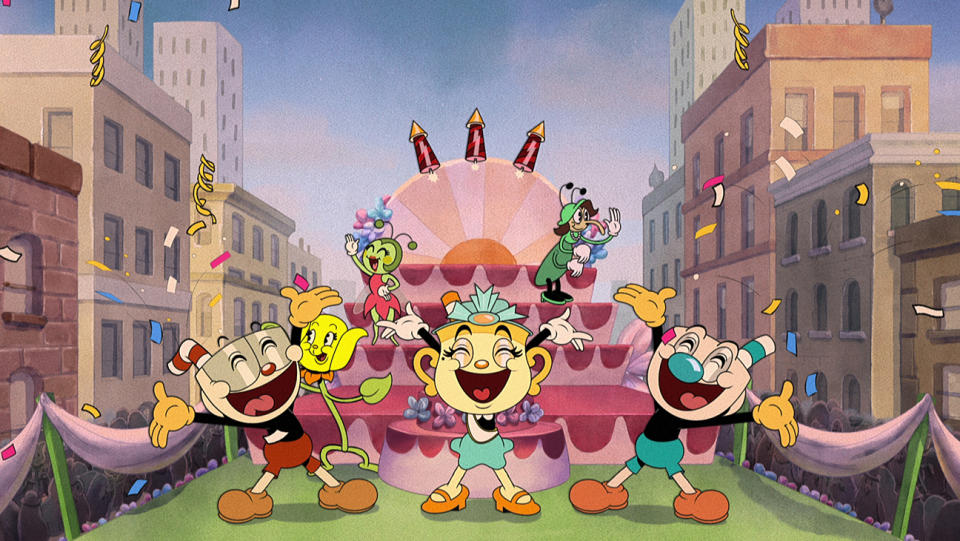
One of the things Netflix has been a part of changing up within the traditional animation production pipline is episode orders, which with higher counts and syndication opportunities made it easier for generations to pass down a show. The streamer tends to batch episodes at smaller numbers. What’s the thinking behind that approach?
When we talk about batching — and there’s some batching done in adult programming — it’s really taking an audience-first mindset. What are they looking for? What is the opportunity to view a show or series and how is that satisfying? What’s the cadence that makes sense to entertain? At some level, if I make a show today and then I don’t launch something for five years, you’re not going to have much continuity of experience.
Generally we try to start with enough so that people really can understand the show and get deep enough in it that it becomes something that they care about. I think if you start with a very small drop, people might not know what this is about. The dimensionality might be a little blurry.
It’s interesting. When I first started doing anime, it was always like, “You got to do 13 to 26, 52.” But it’s all from a linear schedule. They were dropping weekly. This is coming from a different mode of viewing and distribution. So for us, it’s about finding, in the streaming era — because, obviously, that’s the only business we’re in — how do we engage people in a satisfying way. For different audiences in animated series, you could find they don’t want short little drops, they want longer shows, more serialized. So that might lean us in an adult genre show towards a full season, but serialization is more important there often, too.
Some people are going to want a three-episode arc, whereas maybe on a younger side — I’m talking generally here because every show has its own needs — you might not have that. But dropping five episodes isn’t enough [for certain audiences] because people re-watch those episodes, they compare the episodes. It’s a very different viewing engagement. It’s hard to make a general statement on that, but we are very open to finding the ideal cadence and connection moment with an audience.
We want to do it in a way that we’re not leaving the viewer like, “That’s out of my picture now.” That’s the critical part. We have to be consistent enough that we’re meeting their appetite as it wanes. Over time, someone might re-watch a show a lot, but eventually that will go down. They’ll watch it many times and now what? What’s the next turn of the card there?
Best of The Hollywood Reporter

